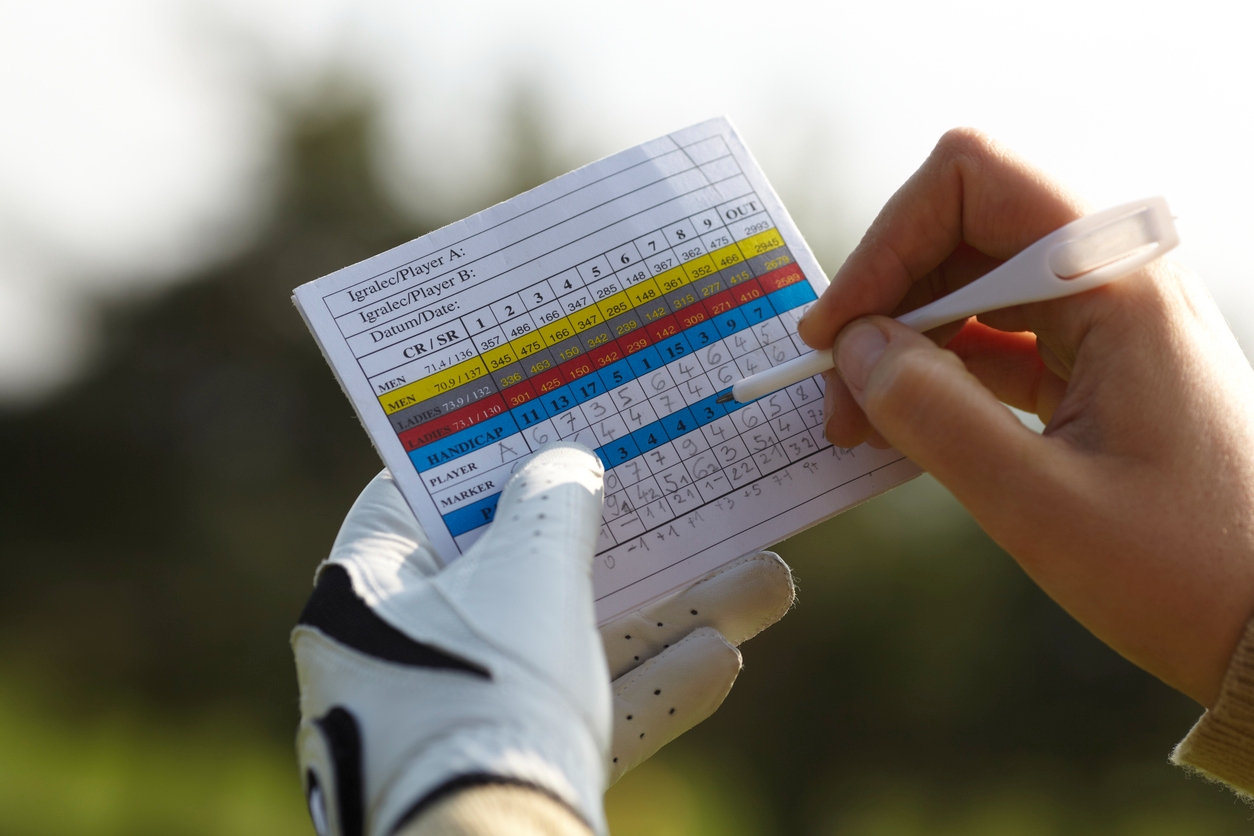Starting golf can feel like unlocking a whole new world—beautiful courses, new gear, and a game that mixes patience, precision, and practice. But if you’re a beginner, one part of the game might still feel a little murky: how to keep score.
If you’ve found yourself unsure of what to write on the scorecard after finishing a hole, or you’ve heard someone talk about a “double bogey” and nodded along without a clue—don’t worry. This guide walks you through the basics of golf scoring in a simple way that builds confidence from your first tee to your final putt.
The Basics: Understanding How Golf Scoring Works
At its core, golf scoring tracks the number of strokes it takes to get the ball from the tee into the hole. The fewer strokes, the better your score. Your own score is cumulative across the entire round, usually 18 holes, but each hole has its own standard to measure against: par.
- Par is the expected number of strokes it should take a golfer to complete a hole.
- Par 3 = expected to complete in 3 strokes
- Par 4 = 4 strokes
- Par 5 = 5 strokes
Common Golf Scoring Terms:
- Birdie – One stroke under par
- Par – You made the hole in the expected number of strokes
- Bogey – One stroke over par
- Double bogey – Two strokes over par
- Triple bogey – Three over (and so on…)
If you’re on a par 4 and take six shots to sink the ball, that’s a double bogey. It’s common for a new golfer, and no one’s judging, improving your golf game is part of the fun.
Reading the Scorecard: What Goes Where

Each golf course has its own scorecard, but they all follow the same format. Look at River’s Edge scorecard for example. You’ll see the hole numbers, the par for each hole, and boxes where you’ll track your own score.
You’ll want to:
- Record your strokes per hole
- Tally the total score after 9 and 18 holes
- Mark any penalties
Many golfers also like to share scorecards to track group play, making it a fun, social part of the round.
What Counts Toward Your Score
This is where keeping score can trip people up. Every stroke counts—from your first swing on the first tee, to that final short putt on the green.
Count the following:
- Every stroke (yes, even the ones you wish you could forget)
- Penalty strokes (e.g., hitting into a penalty area)
- Drops and re-hits
If you swing and miss completely, that still counts. If you take two swings to get out of a bunker, that’s two strokes. Every golfer, even the pros, deals with the occasional bad shot—you’re not alone.
Penalty Areas, Lost Balls, and Mulligans
Penalties can affect your score, so it’s helpful to understand how they work.
Common penalties:
- Out of bounds or lost ball = add 1 stroke and replay the shot
- Penalty area (water or marked hazard) = 1 stroke penalty, then drop near the hazard or use a drop zone
- Unplayable lie (e.g., stuck in a bush) = take a drop and add 1 stroke
Friendly tip: some groups allow mulligans (a free redo) during casual games. In official play, though, every stroke counts.
Handicaps and Net Scoring for Beginners
Let’s say you’re playing with friends who are more advanced—how do you keep up? That’s where a handicap comes in. A handicap gives you extra strokes based on your skill level, helping level the playing field.
Here’s how it works:
- Your gross score is your raw total, without adjustments
- Your net score subtracts your handicap from the total
This net scoring system lets average golfers compete with experienced golfers in friendly matches—or formal ones using the USGA scoring system here in the United States.
Stroke Play vs. Match Play
Not every round of golf uses the same scoring method.
Two common formats:
- Stroke Play – Total all your strokes. Lowest total score wins. Most common for casual and competitive rounds.
- Match Play – Each hole is a separate contest. Win more holes than your opponent, and you win the match.
In match play, if you have a bad hole, it doesn’t ruin the entire round—just that hole. That’s why many new golfers love this format early on.
A Quick Beginner’s Guide to Keeping Score
Here’s a simplified step-by-step guide for your first time keeping score:
- Know the par for each hole
This is your target for the number of strokes.
- Count every swing
Include practice swings that hit the ball and any penalty strokes.
- Record your own score after each hole
Don’t wait until later—you’ll forget.
- Watch for bad holes
It’s okay to mark a double bogey or worse. Everyone starts there.
- Add it up at the end
Tally both front and back nine, then calculate your total score.
How to Stay Encouraged as a Beginner

You might have a bad hole or two—or six. That’s completely normal. Golf is a journey, not a sprint. Focus on progress: one good short putt, one well-hit tee shot, one hole where you match par. Small wins build big confidence.
A few tips:
- Keep a clean scorecard, but don’t obsess
- Shake off the bad shots—they happen to every golfer
- Track your best holes and celebrate small victories
- Play from forward tees if needed—it helps pace and fun
And remember: the goal isn’t perfection. It’s to enjoy the walk, the view, and the satisfaction of improving your golf game over time.
Book Your Next Round at River’s Edge
There’s no better way to practice your scoring method than out on the course. At River’s Edge, we welcome every new golfer with scenic fairways, welcoming staff, and a course that helps you grow your skills—one swing at a time.
Ready to put your new scoring knowledge to work? Book a tee time today and enjoy your next round with confidence.
Looking for more beginner tips or equipment insights? Explore our popular River’s Edge Blog for more!
FAQs About Keeping Score in Golf
1. Do I need to keep score every time I play golf?
No, you don’t have to keep score on every round of golf—especially as a beginner. Some days, it’s more fun to just enjoy the course without focusing on numbers. That said, tracking your own score regularly is one of the best ways to see improvement. It gives you a clear picture of progress and helps you set realistic goals for your game.
2. How many strokes should I take on a hole before picking up the ball?
There’s no official maximum in casual play, but many golfers follow a guideline of double par plus one. For example:
- On a par 4, you’d pick up after 9 strokes.
This keeps the round moving and prevents frustration if you’re having a bad hole. In friendly matches, your group may agree to a “pick-up” rule just to keep the pace comfortable. Don’t worry—it’s all part of the learning process.
3. What do I do if I forget my score on a hole?
If you can’t remember the exact number of strokes, think back through the hole:
- 1 off the first tee
- 2 to the fairway
- 3 into a penalty area
- Drop, 4th stroke… This helps reconstruct what happened. If you truly can’t remember, write your best estimate and note it with a small symbol or asterisk so it doesn’t affect official results.
Eventually, tracking your own score will become second nature.
4. What’s the difference between gross and net score?
Your gross score is the total number of strokes you took—raw and unadjusted.
Your net score accounts for your handicap, which is a number that reflects your skill level. Subtract your handicap from your gross score to get your net score. This system allows golfers of all abilities to compete fairly, especially in friendly or tournament play.
5. How do I handle penalties on the scorecard?
When you receive a penalty (like hitting into a penalty area or losing a ball), you add an extra stroke to your score for that hole. Just record the final total—there’s no need to separately list the penalty unless you’re in a formal competition.
So, if you took 5 shots to finish a par 4 and had a 1-stroke penalty, your score is 6. Simple as that.
6. Do practice swings count as strokes?
Only if your practice swing actually hits the ball. If you whiff and the ball doesn’t move? That’s a counted stroke. Otherwise, feel free to take a couple of dry swings before your shot—no harm done.
7. Can I use my phone or app to keep score instead of a physical scorecard?
Absolutely. Many golfers use apps or GPS devices that let them enter scores digitally and track stats like spin rate, number of strokes, and fairways hit. At River’s Edge, you’re welcome to use any method that helps you track your golf score and enjoy the game.
Still, it’s always good to carry a backup scorecard just in case your battery runs low on the back nine!
8. What if I have a terrible hole—should I just quit?
Not at all. Every golfer has had a bad hole (or several). The great thing about golf scoring is that you reset on the next hole. A single double bogey or worse doesn’t define your entire round. Shake it off, take a breath, and focus on making your next short putt count. That rebound is where real progress starts.
9. How do I calculate my final score after a round?
At the end of the day, add up the number of strokes from each hole on your scorecard. Total your front 9, back 9, and then combine them for your total score. If you’re using a handicap, subtract it to find your net score. If you’re in match play, the outcome depends on the number of holes you won—not the total.
10. How do I know if I’m improving?
Track patterns. Are your double bogeys happening less often? Are you scoring more pars? Maybe your drives are staying straighter or you’re needing fewer putts per hole. Improvement shows up in small ways first.
Keep older scorecards and compare them after each round. Seeing your scores drop, even slightly, builds confidence and makes the game even more rewarding.
